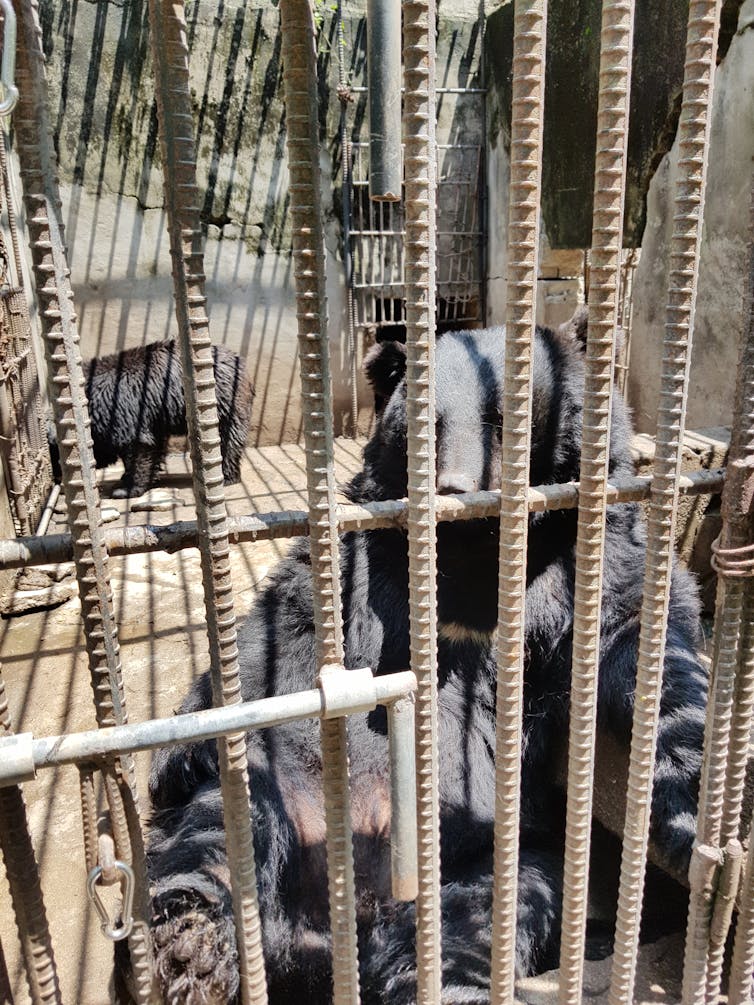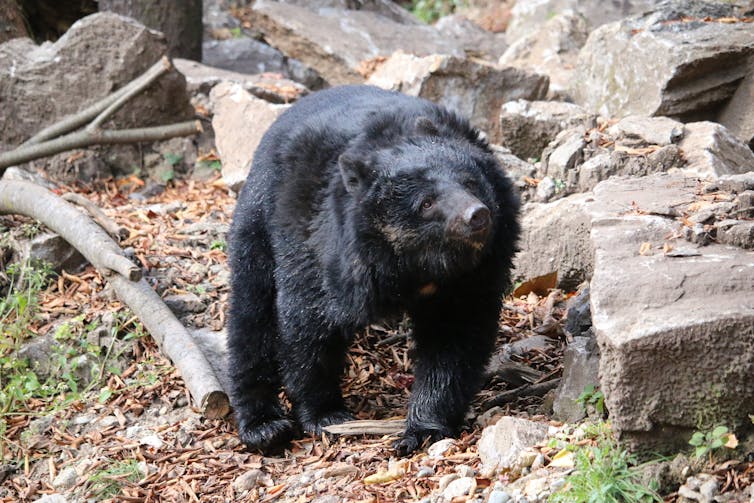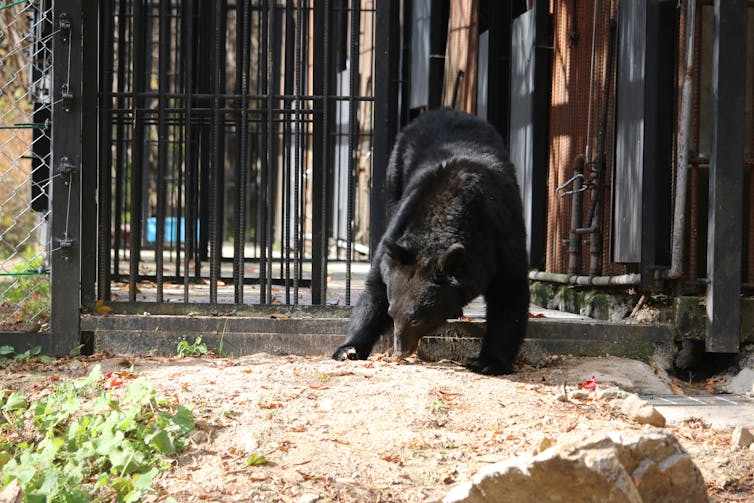
South Korea’s successful restoration of a wild Asiatic black bear population to Jirisan National Park is a huge conservation success story. But the fortune of this wild population stands in contrast to the plight of more than 300 captive bears that remain on bear farms across the country, often in extremely poor conditions.
A series of major policy changes during the past year have included the announcement of a joint declaration between the South Korean government, bear farmers and NGOs to ban bear farming in the country by the start of 2026. After almost 30 years of policy deadlock over the fate of captive bears in South Korea, the joint declaration sets out a clear pathway towards the end of bear farming in the country.
Bear farms, which are also found in other countries in Asia, including China, Vietnam and North Korea, were originally established as a source of bear bile and body parts for traditional medicine and bear meat for food. However, the practice of bear farming has been criticised for failing to alleviate pressure on wild bear populations and its consequences for animal welfare.

While the agreement to ban bear farming is a major success for South Korea’s environmental movement, I wanted to see how the captive bears on a farm I first visited in 2021 were faring, so in late October 2022, I travelled to the mountains of Gangwon province, just south of the demilitarised zone that divides North and South Korea.

While this farm no longer actively harvested its bears, when I first visited in 2021, the animals languished in small cages, malnourished and lacking regular access to water. This state of affairs is not unusual; although a 2007 study found that many South Korean bear farmers wanted to see an end to bear farming, the captive bears themselves had previously been largely overlooked by government attempts to regulate the industry.
Improved conditions
The change in the past year was scarcely believable. A new outside enclosure had been constructed by a team of volunteers from two Korean NGOs, Project Moon Bear and Korea Animal Rights Advocates (KARA), featuring a pool and “enrichment” (items that provide stimulation for captive animals). Hollow logs lined with honey and nuts were a particular favourite.

While you could still see abnormal repetitive behaviours in some of the bears (a sign of long-term stress), they appeared in much better physical condition and were benefiting from a new, improved diet, provided for them by the NGOs. Specialist animal trainers had even taught the bears to accept hand vaccinations from veterinarians, something which allows captive animals to be treated without the need for heightened stress or sedatives.
These bears could never be released into the wild, as they are too used to being fed by humans. Some may not even be the native Asiatic black bear, given that a number of different species were originally imported to stock South Korea’s bear farms.

However, bear sanctuaries in Europe have shown how captive animals that cannot be released into the wild can still be provided with much improved welfare conditions. The Libearty Brown Bear Sanctuary in Zarnesti, Romania is one of the largest and houses bears that have been rescued from entertainment facilities and animal shows, including circuses, restaurants and hotels.
The changes by Project Moon Bear and KARA to the farm in Gangwon province have made life better for the bears. But they also illustrate the expertise in captive bear management that is needed to successfully rehouse potentially hundreds of bears from farms across the country.
Hundreds of bears still captive
In order to make an end to bear farming in South Korea a reality, there are also legislative and budgetary hurdles to be overcome. Then there is the question of whether the planned public sanctuaries will have sufficient capacity (the current target is 120 animals) for the number of bears they might be expected to hold.
There are currently 322 captive bears spread across 20 farms in South Korea. While Project Moon Bear and KARA plan to build a private sanctuary to help address the shortfall, it is estimated that this will cost as much as US$2.25 million (£1.85 million). That is on top of the government’s current expectation that the NGOs will help buy animals from bear farms.

Despite the clear challenges ahead if South Korea is to fulfil its stated aim to end bear farming by 2026, the outlook for captive bears in the country now looks much brighter. Conservationists and policy makers in other countries where bear farming occurs will undoubtedly be watching with interest.
Joshua Powell receives funding from the London NERC DTP. In 2021-22, he was a visiting research student at Seoul National University's College of Veterinary Medicine. He was invited to visit a bear farm with Project Moon Bear.
This article was originally published on The Conversation. Read the original article.







